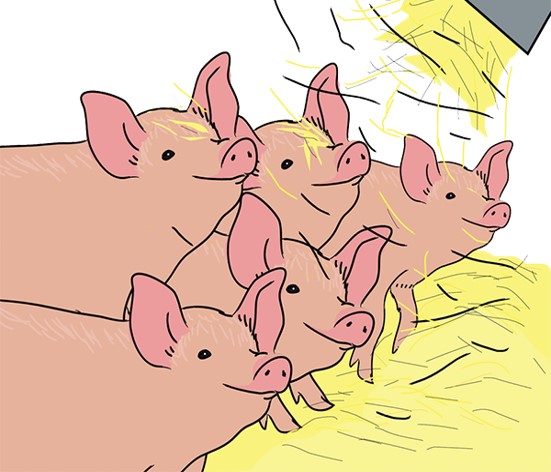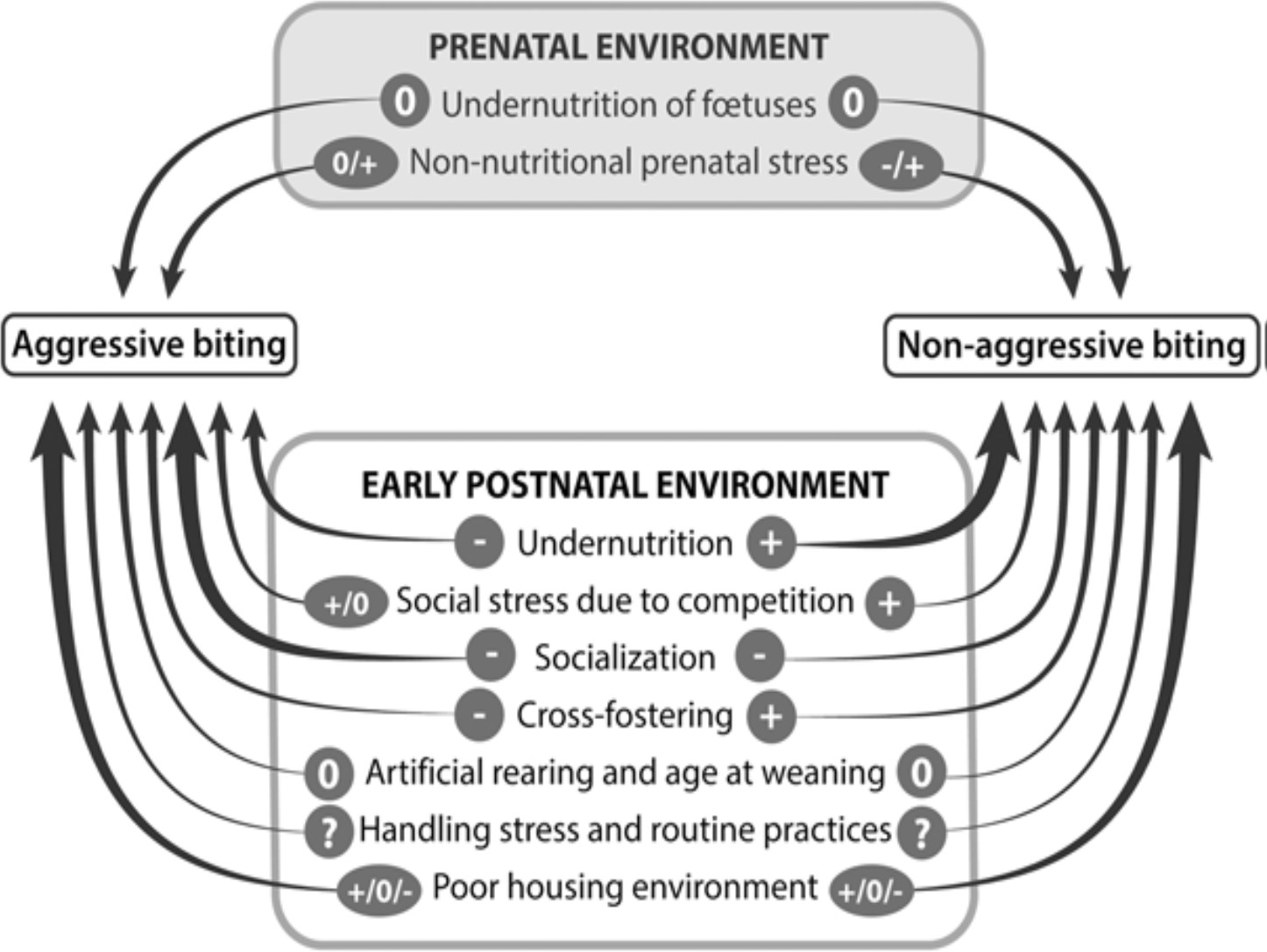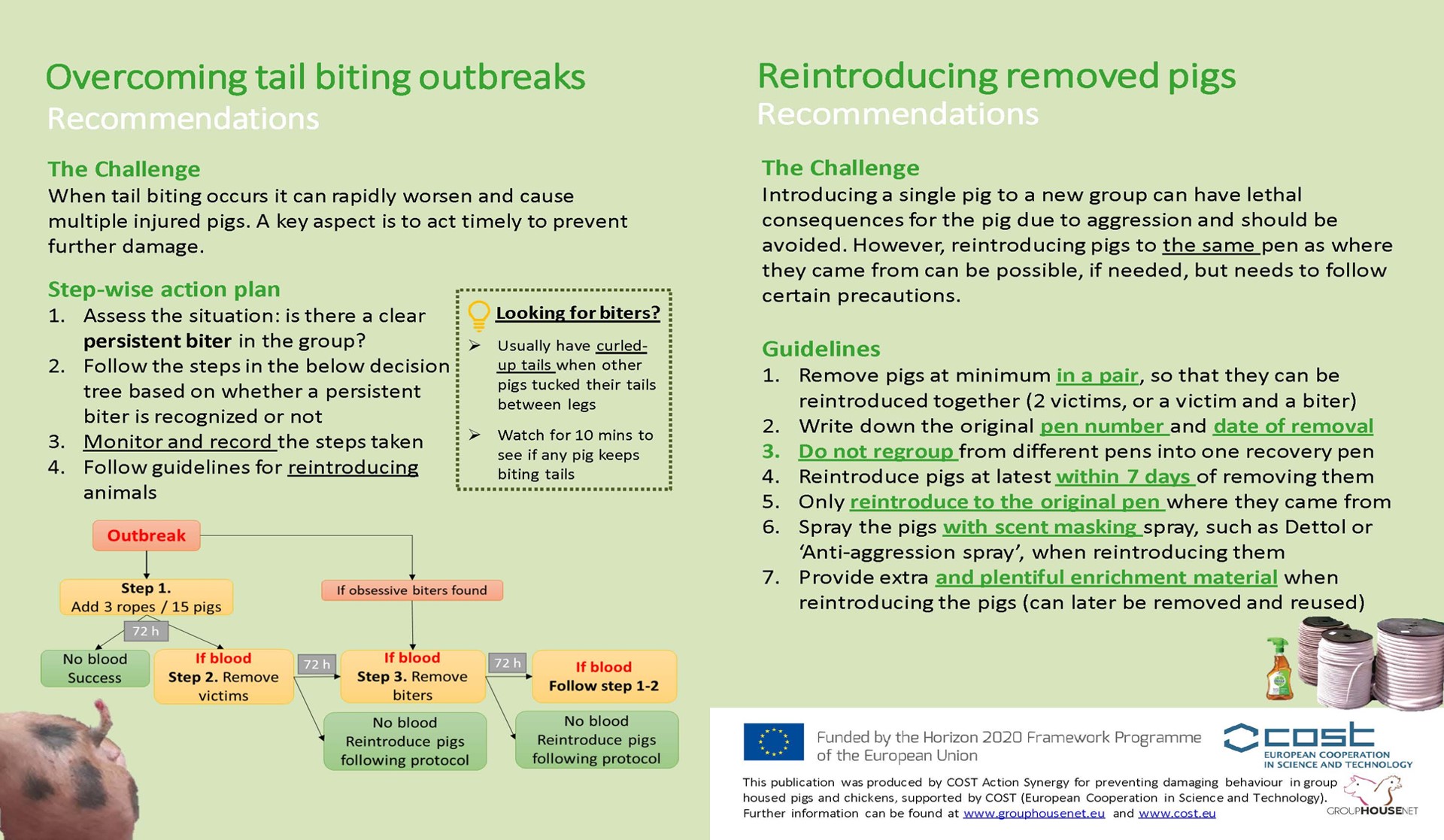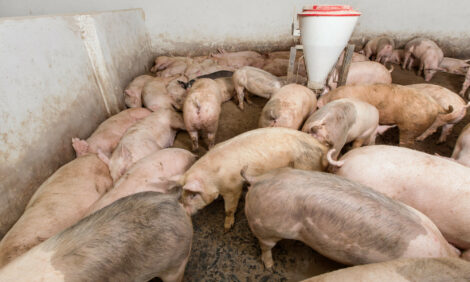



GroupHouseNet: four years of EU-wide collaboration on tail docking solutions
In 2016, the EU programme, COST, funded an initiative to collaborate across Europe with the aim of reducing damaging behaviour in group housed pigs and poultry. The resulting COST Action, “GroupHouseNet”, has worked over the last four years to reach that aim.Researchers across Europe join forces
The EU-funded COST (Cooperation in Science and Technology) programme enables researchers to collaborate across Europe, thereby giving equal opportunities to all researchers regardless of age, gender or country, to expand their research network and jointly make progress in various field of science. The COST Action, named GroupHouseNet, started in 2016 and focused on ways to reduce damaging behaviour in pigs and poultry. For pigs this included mainly tail biting and aggression. The aim was to reduce the incidence of damaging behaviours in group-housed animals by refining methods of genetic selection and by developing husbandry innovations that improve early and later life conditions. Researchers and industry stakeholders from 25 EU member states, as well as Norway, Turkey, former Yugoslav Republic of Macedonia, Montenegro and Serbia, joined forces in order to achieve this by sharing knowledge.
Genetics of damaging behaviour
Tail biting and aggression are moderately heritable traits in pigs, meaning that it is possible to genetically select against it by careful selection of the sow and the boar. A working group within the project focussed specifically on how tail biting and aggression can be reduced through genetic selection. One of the outcomes was an extensive scientific review of various methods to improve the estimation of genetic effects of behaviours that occur infrequently and sporadically. Genetics companies are also contributing their part to reduce tail biting, with Topigs Norsvin being one of the pig breeding companies actively involved in the project. A participant from Topigs Norsvin explained that in Norway all farmers and employees in the pig barn have to take a mandatory e-learning course in pig welfare, a decision that all parts of the Norwegian pig industry agreed upon. The course, developed by Animalia (Figure 1), includes amongst others an introduction on how to observe the animals in the barn; identifying normal behaviour; following up with up sick or injured animals; and dealing with tail biting.

© Animalia
Development of biting behaviour
Tail biting behaviour develops already from an early age and can even be seen pre-weaning. Another group of scientists within GroupHouseNet looked specifically at the circumstances in early life that may give rise to tail biting or aggression later in life. In their review of the literature they point out the differences between aggressive biting and non-aggressive biting, whereby tail biting and other oral manipulative behaviour such as ear biting mainly falls in the category of non-aggressive biting. Only a small percentage of tail biting happens as a result of aggression. The article concludes that even though the environment of the pig at the moment of tail biting plays a major role, the early life environment also has a contribution and should be optimised as a preventative measure. Figure 2 from the review paper indicates the factors that affect aggressive and non-aggressive biting.

The “+” indicates the factor is increasing biting, “0” indicates no effect, and “–” a decrease in biting. A “?” indicates that there is not enough information available (less than 5 published studies). Figure from Prunier et al. (2020) Animal, 14(3), 570-587. © Prunier et al. (2020)
Health and environmental effects
Knowledge about how damaging behaviour relates to health is important for understanding the causes of damaging behaviour and to develop health related preventative strategies for reducing it. Researchers of the GroupHouseNet project studied the relationship between health and tail biting, such as the effect of illness on social behaviour of pigs with intact tails. In another article, Brunberg et al. (2016) describe how tail biting might be related to the gut-brain axis, thereby pointing out the potentially important role of a healthy gut microbiota. A group in Finland reported the risk factors for tail biting based on a survey amongst 78 pig farms. They found that many aspects in the environment play an important role in the prevalence of tail biting. The multitude of involved factors confirms again how multifactorial tail biting is, and that it cannot be solved by merely adjusting one aspect of the environment or management.
Getting results to the sector
Several countries are working on new legislation and on-farm regulations to prevent tail docking of pigs. This means there is now a desperate need for up-to-date information on how to prevent and control tail biting. Much of this information is already available online but not everyone is aware of this. For example, the European Commission provides videos of commercial farms in Finland and Italy that show best practice, having successfully stopped tail docking. The videos are available in eight different languages. The FareWellDock project has produced factsheets on different aspects of tail docking and tail biting, also in multiple languages. These provide information about prevention and control of tail biting and are aimed to help farmers. In addition, GroupHouseNet has produced a short video and testimonial on how keeping pigs with long tails can be feasible in practice. Also several leaflets have been produced for practice, such as the one in Figure 3.
Great diversity within the EU
What is very clearly observed at international meetings, such as GroupHouseNet, is the diversity between EU member states in farming systems, climate and management, and therefore also in the solutions needed. This means that any supplied information regarding pig welfare solutions needs to be appropriate to each country. In some countries tail docking is already forbidden, such as in Finland and Switzerland; or has never been allowed (Sweden and Norway). In other countries, basic information about the multi-causality of tail biting does still need to reach the sector properly. A lot of information is available, but the small part that reaches the sector will depend on the type and quantity of media coverage and the engagement of farm advisers and veterinarians in informing the producers.
Making progress together
An important part of the project was the involvement of stakeholders, including pig farmers, industry representatives and policy makers. European farmers will have to get to grips with the restrictions on tail docking and providing proof of having taken extensive measures to attempt to reduce tail biting before docking will be permitted.
Steps need to be taken in the direction of keeping pigs with intact tails. In one GrouphouseNet stakeholder workshop in Slovenia, pig farmers came together in large numbers to discuss the most appropriate measures to take to cease routine tail docking. By creating a critical mass in the relatively small pig sector, researchers together with pig farmers gained support from the government to start trials with pigs with intact tails. This breakthrough shows how much is possible when forces are joined. It also became apparent that many other stakeholders need to join the initiative – farmers who want to fatten pigs with long tails will depend on the supply of piglets with intact tails from breeders. Because weaners are bought and sold across borders, this points out the need for the developments to take place at an international, or at least European, level. Through the European-wide collaboration in GrouphouseNet at least a few extra steps in the right direction have been made. To stay up to date and investigate the GroupHouseNet website where all information materials are available for free.
| References | ||||
|---|---|---|---|---|
| Brunberg et al. | ||||
| (2016) | Omnivores going astray: a review and new synthesis of abnormal behavior in pigs and laying hens.. Frontiers in veterinary science | 3, 57 | ||
| Kallio et al. | ||||
| (2018) | Case control study on environmental, nutritional and management-based risk factors for tail-biting in long-tailed pigs.. Animal Welfare | 27(1): 21-34(14) | ||
| Munsterhjelm et al. | ||||
| (2017) | To be blamed or pitied? The effect of illness on social behavior, cytokine levels and feed intake in undocked boars.. Physiology & behavior | 179, 298-307 | ||
| Prunier, A., Averos, X., Dimitrov, I., Edwards, S. A., Hillmann, E., Holinger, M., ... & Camerlink, I. | ||||
| (2020) | Early life predisposing factors for biting in pigs.. Animal | 14(3), 570-587 |










